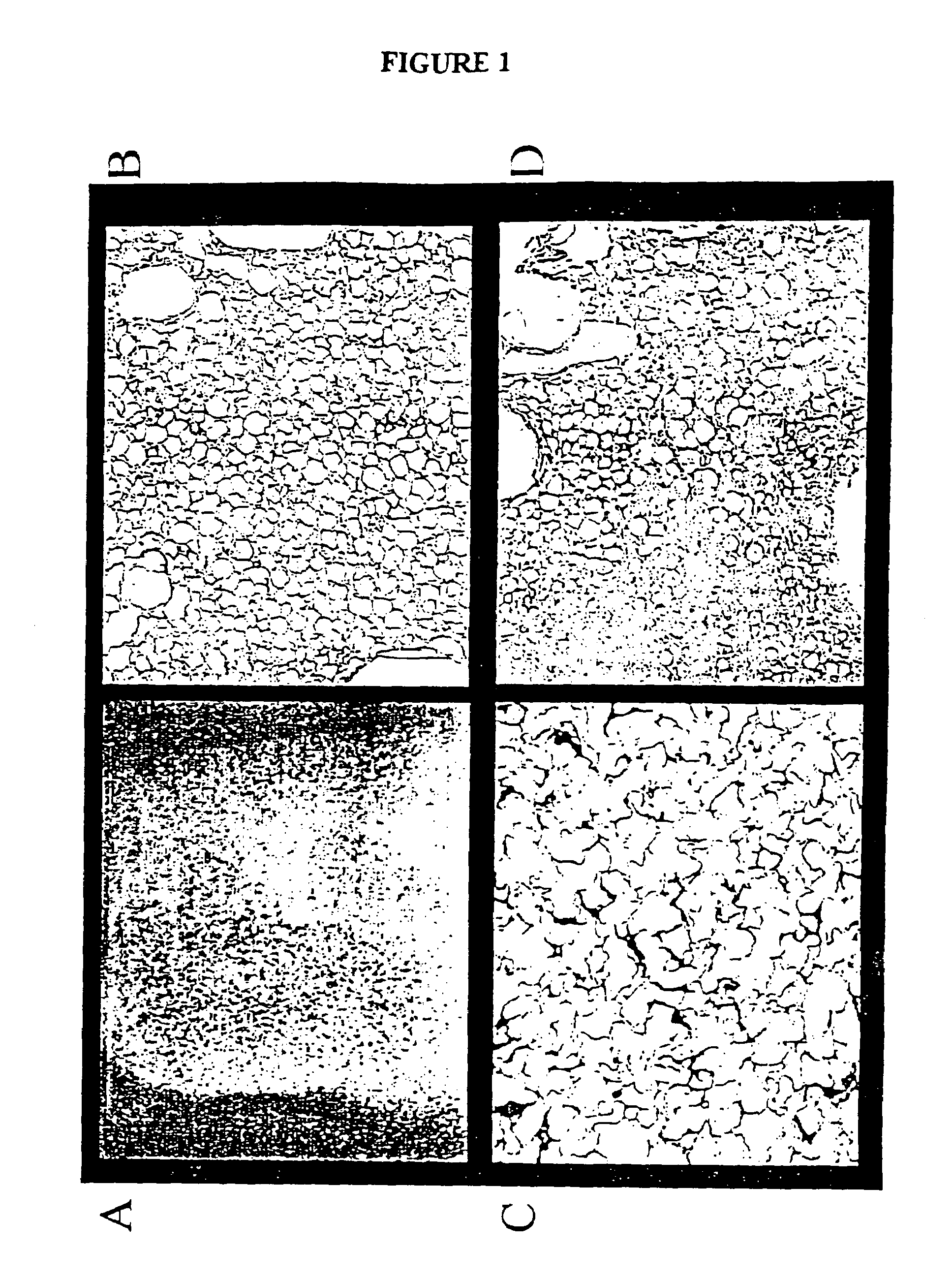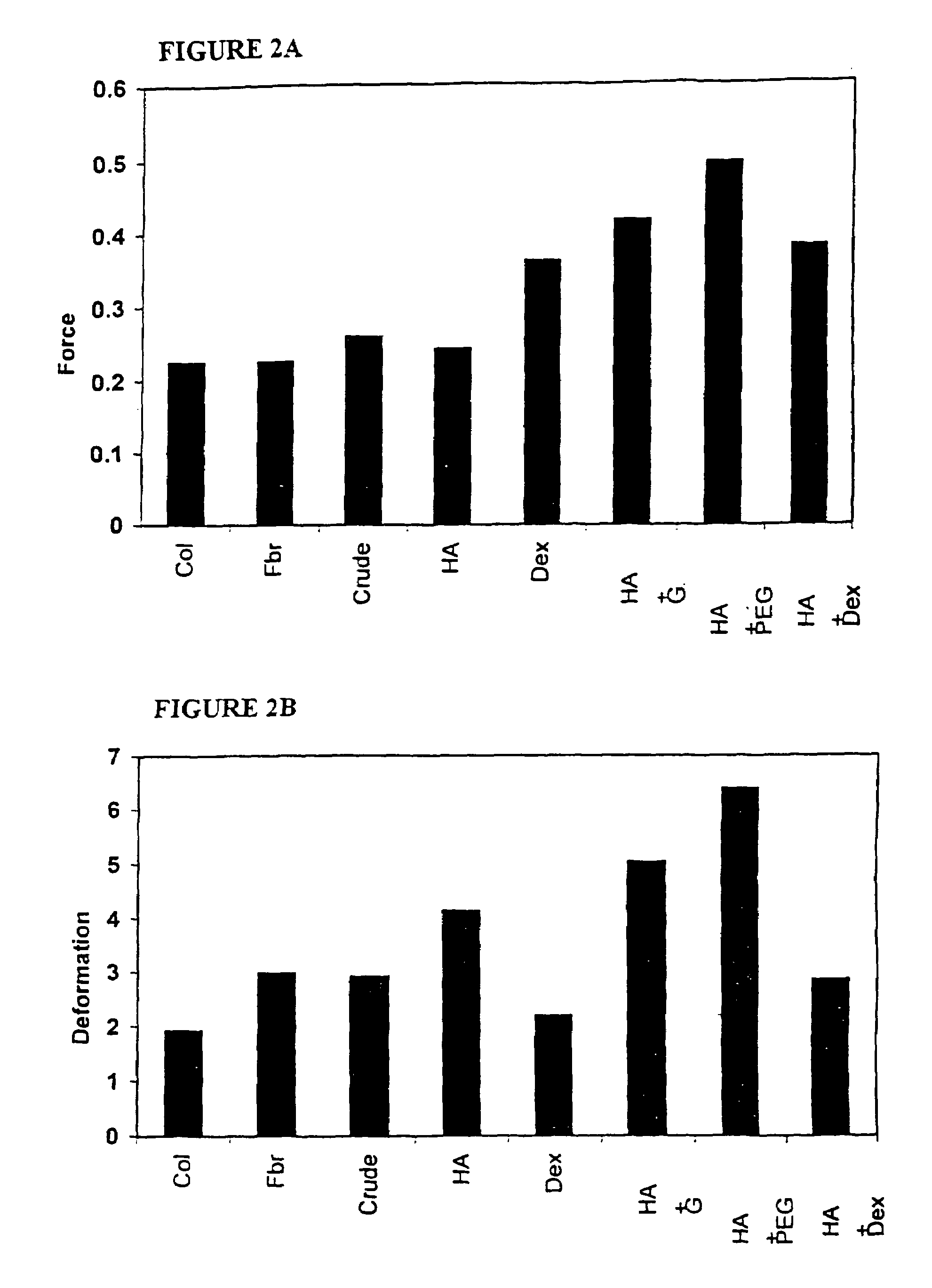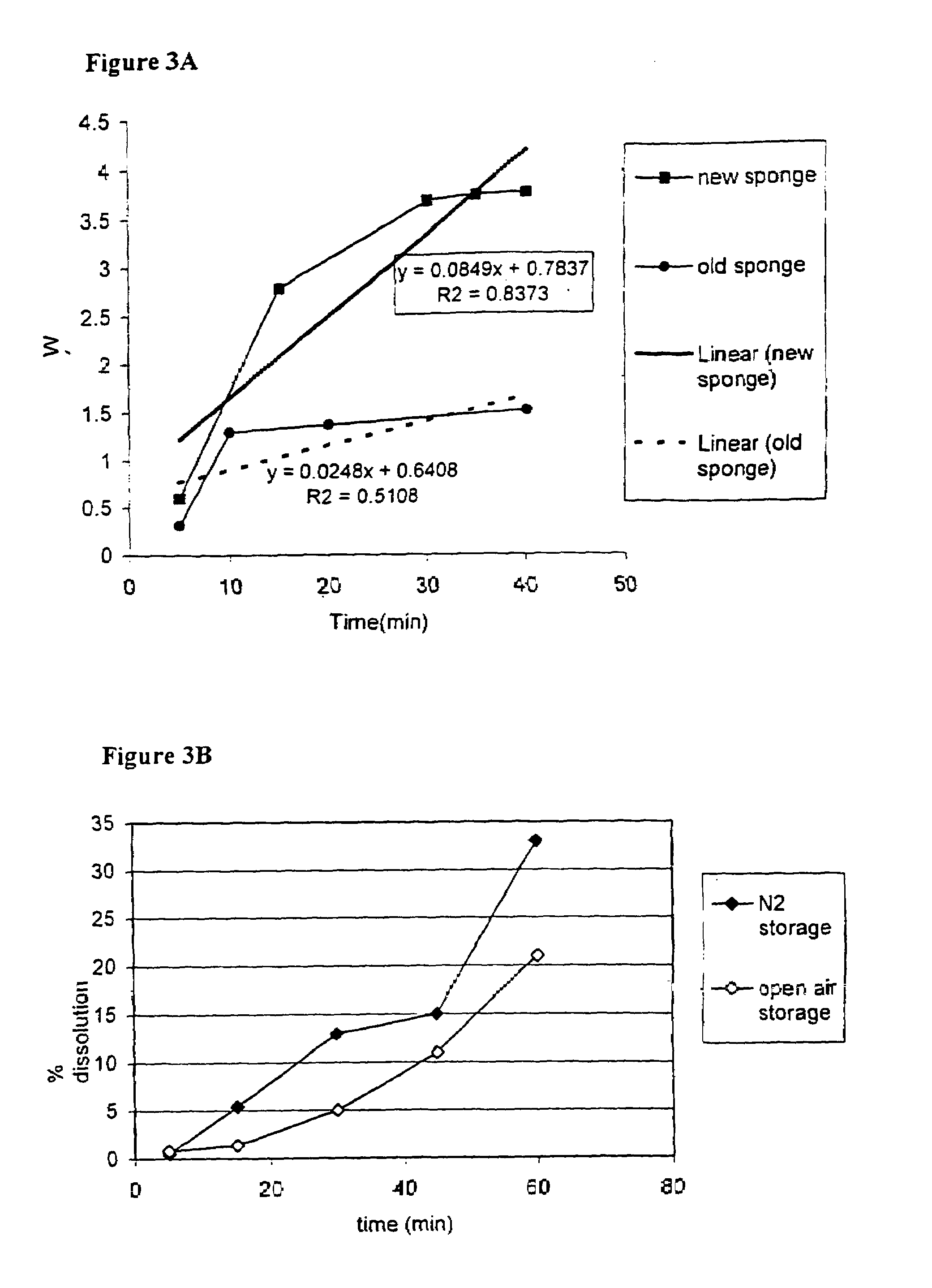Plasma protein matrices and methods for their preparation
a protein matrix and plasma technology, applied in the field of biomatrices, can solve the problems that none has proven entirely satisfactory in meeting the criteria required for successful tissue engineering, and achieve the effect of rapid vascularization of implants and rapid growth of cells
- Summary
- Abstract
- Description
- Claims
- Application Information
AI Technical Summary
Benefits of technology
Problems solved by technology
Method used
Image
Examples
example 1
Isolation of Plasma Proteins from Whole Plasma
[0109]Fresh frozen plasma was received from the blood bank (Tel-Hashomer, Israel). The plasma (220 ml) was thawed in a 4° C. incubator over night, followed by centrifugation at 4° C. at approximately 1900 g for 30 min. The pellet was resuspended in 2.5 ml PBS with gentle rolling until a homogenized solution was seen. Tranexamic acid (anti-fibrinolytic; final 10%) and arginine (final 2%) were optionally added to the plasma protein fraction.
[0110]The total protein concentration was approximately 42–50 mg / ml as estimated by Bradford assay and SDS-PAGE (comparing to a standard).
[0111]Although detailed methods are given for the preparation of the plasma protein, it is to be understood that other methods of preparing plasma proteins are known in the art and are useful in the preparation of the matrix of the present invention. An example of a protocol for the preparation of a fibrinogen-enriched solution is given by Sims, et al. (Plastic & Reco...
example 2
Extraction of Plasma Protein Fractions from Allogeneic or Autologous Blood
Materials:
[0112]1) Sodium citrate, 3.8% or any other pharmaceutically acceptable anti-coagulant
[0113]2) Ammonium sulfate (NH4)2SO4, saturated (500 g / l)
[0114]3) Ammonium sulfate (NH4)2SO4, 25%
[0115]4) Phosphate-EDTA buffer: 50 mM phosphate, 10 mM EDTA, pH 6.6
[0116]5) Tris-NaCl buffer: 50 mM Tris, 150 mM NaCl, pH 7.4
[0117]6) Ethanol, absolute 4° C.
[0118]7) Whole blood (Israel Blood Bank, Tel Hashomer Hospital or from patient)
Methods:
[0119]One bag of blood from the blood bank contained 450 ml and contained sodium citrate. To the 450 ml autologous blood, 50 ml of a 3.8% sodium citrate solution was added and the solution w as mixed gently.
[0120]The blood-sodium citrate was distributed to 50 ml tubes (40 ml / tube) and centrifuged at 2,100 g for 20 min. The supernatant plasma was collected into 50 ml tubes and re-centrifuged at 5000 g for 15 min. at 4° C. The supernatant plasma was collected into a flask, put on ice, ...
example 3
Plasma Protein Matrix Preparation Method
Materials:
[0131]Tranexamic acid (5% final)
[0133]Thrombin (1000 units / ml, Omrix)
Methods 1:
[0134]The method for the preparation of the plasma protein matrix was optimized for protein and thrombin concentration as shown in Table 1 below. Samples prefixed with “1” tested optimisation of concentration of clottable protein. Samples prefixed “2” were tested for optimisation of concentration of thrombin in sponge. All experiments were carried out in triplicate.
[0135]
TABLE 1Plasma ProteinThrombinSample #ConcentrationConc. / mg protein1–5 5 mg / ml1.5 IU1–1010 mg / ml1.5 IU1–2020 mg / ml1.5 IU1–3030 mg / ml1.5 IU2–0.520 mg / ml0.5 IU2–4.520 mg / ml4.5 IU
Results-1:
[0136]Sponges were analyzed by comparison of dry and wet physical properties.
[0137]The sponge made with 5 mg / ml protein (sample 1–5) shrank significantly upon freeze-drying. The sponges made with 10 or 20 mg / ml protein kept their structure after 24 hours in tissue culture medium, w...
PUM
| Property | Measurement | Unit |
|---|---|---|
| Fraction | aaaaa | aaaaa |
| Fraction | aaaaa | aaaaa |
| Size | aaaaa | aaaaa |
Abstract
Description
Claims
Application Information
 Login to View More
Login to View More - R&D
- Intellectual Property
- Life Sciences
- Materials
- Tech Scout
- Unparalleled Data Quality
- Higher Quality Content
- 60% Fewer Hallucinations
Browse by: Latest US Patents, China's latest patents, Technical Efficacy Thesaurus, Application Domain, Technology Topic, Popular Technical Reports.
© 2025 PatSnap. All rights reserved.Legal|Privacy policy|Modern Slavery Act Transparency Statement|Sitemap|About US| Contact US: help@patsnap.com



